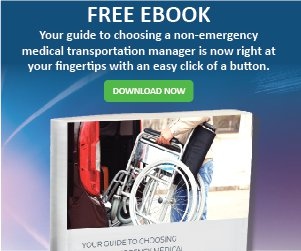
When we talk about kidney disease around the office, you’ll often hear that it is no walk in the park. The stories are both heartbreaking and inspiring. A 25 year old is a match for a kidney transplant. A 57 year old is back to his normal work routine after starting dialysis just a few weeks earlier. A 71 year old is getting his high blood pressure under control so the dialysis doesn’t make him so nauseous.
Our drivers pick up a typical kidney dialysis patient three times a week and transport them to a hospital or clinic for a treatment that lasts 4 hours. These patients lug books, magazines and sometimes electronic devices with them to beat the boredom while they are hooked up to the life-saving machine that cleans their blood. Other than the initial procedures and the needles no one seems to get used to, the treatment itself is painless. The nurses and other patients at the clinic often become a great support system and help prevent depression that can set in on patients so often. We hope to make a positive impact as well. We are so inspired by those who manage the circumstances of this disease so well, because it doesn’t stop once the dialysis treatment is over. It’s a battle every single day.
After our drivers take a patient back home, they have to follow a special diet that is often low in protein, salt and potassium. Meat, bananas, spinach and tomatoes are out. Apples, carrots, green beans and blueberries are in. If other illnesses are at play, they may have to meet with a nutritionist to help manage a healthy diet on top of their dialysis appointments. Only cancer patients see doctors more than those with kidney disease. There are medications to manage.
Kidney disease patients often have to take medications that lower their high blood pressure or lower cholesterol. Sometimes these patients experience swelling and have weaker bones. Dialysis only does about 10% what a normal kidney does. As a result, the life expectancy of someone on dialysis is only about five years, although some do live longer. It’s not an easy life. That is why we find it so heroic when we find a patient that tackles it with an amazing attitude every time we pick them up or talk to them on the phone.
What beats dialysis?
Patients can and are encouraged when possible to go about their normal routines. Many adults work and exercise. Many people feel good on dialysis if they are managing the disease well. The toughest thing about dialysis is that once on, most people don’t get off. The only thing that beats kidney dialysis is a kidney transplant. A landslide majority of the people waiting for organs are waiting on kidneys.
If you are one of the lucky ones who receives a successful transplant, the dialysis is over and for a long time. A transplanted kidney can function a solid decade or more. However, people can wait for a donor for years if there isn’t a good living family match. Only about 17,000 transplants occur per year and there are typically 100,000 on the waiting list. Every day 12 people die waiting for a kidney. We lose more Americans to kidney disease than to breast cancer or prostate cancer.
Who’s at risk?
About one quarter of the people LogistiCare transports annually have kidney disease in late stages that requires dialysis. It’s a high number and unfortunately that figure could climb. With the increase in diabetes and high blood pressure--two major kidney disease risk factors--kidney disease is on the rise. In 2012 alone, total Medicare expenditures for all stages of kidney disease reached $87 billion and that didn’t include the cost of prescription medications. Those with heart disease, obesity and high cholesterol are also at risk.
Kidney disease often has no symptoms and can go undetected until it’s very advanced. However, early detection and treatment can slow or prevent the progression of kidney disease. Getting your annual physical can catch early problems that could put you at risk for the disease.
Best case scenario? Let’s put the stats in reverse
When you carry as many people that endure kidney disease and late stage dialysis as we do, the fight gets very personal. We talk to caregivers and patients with this disease every day. We celebrate their highs and we see their lows. So it should come as no surprise that as a company we decided to take this particular fight on at every level.
Together, we believe we can help the National Kidney Foundation reach the 1 in 3 American adults at risk for kidney disease with important prevention messages before it’s too late. That’s why LogistiCare leaders and staff have joined the fight. We sponsor the foundation on a national level, advising boards and rallying teams. We participate in walks around the country and help the foundation raise money so they can fight the disease, educate a nation, and change, maybe even reverse, the current statistics. We are honored to give back in this special way. Please visit www.kidney.org to find out how you can help.
Sources:
National Kidney Foundation. Fast Facts.
Mayo Clinic. Chronic kidney disease.
Beth Israel Deaconess Medical Center, a Harvard Medical School Teaching Hospital. The Benefits of Transplant versus Dialysis.



